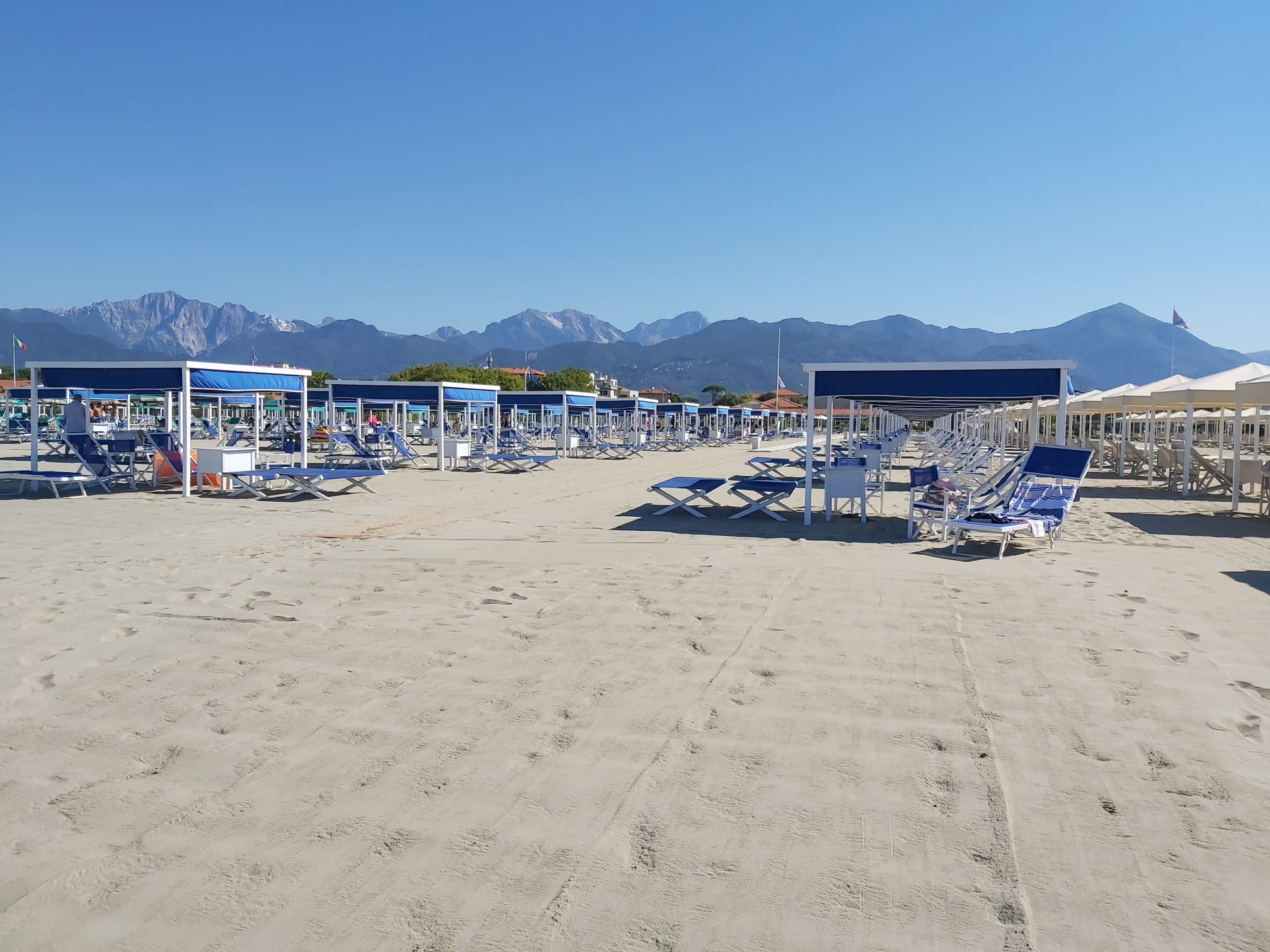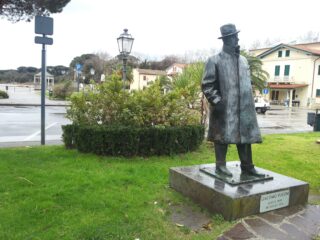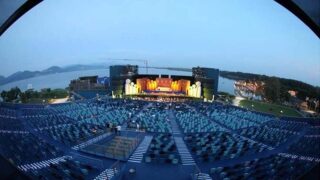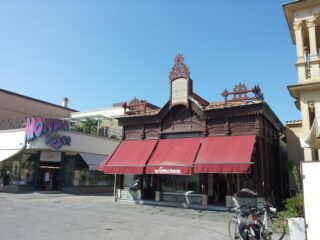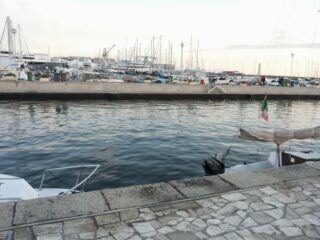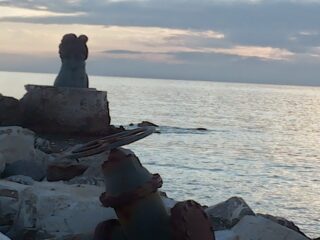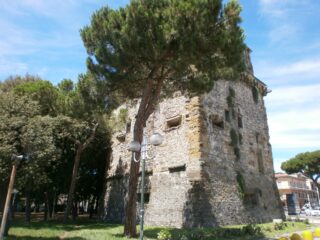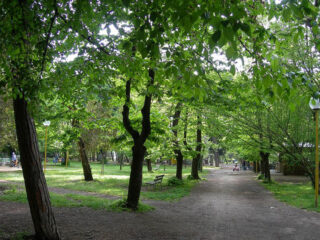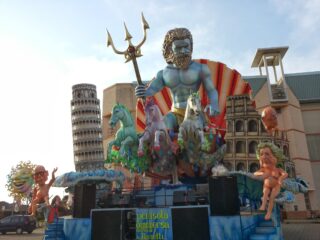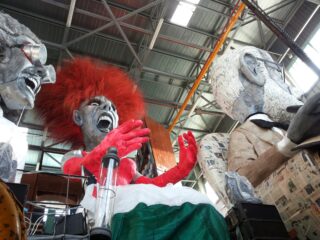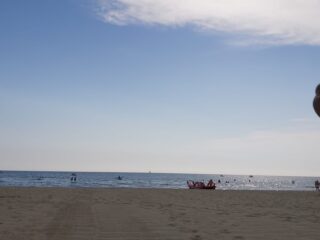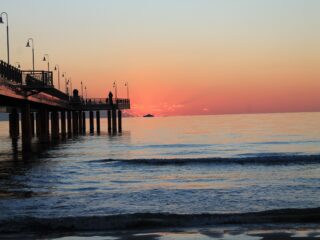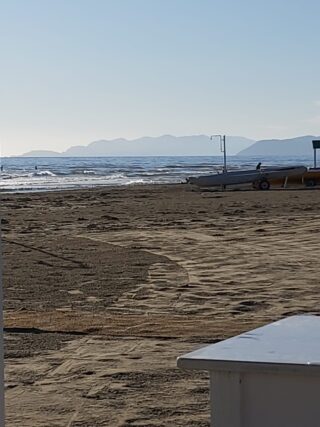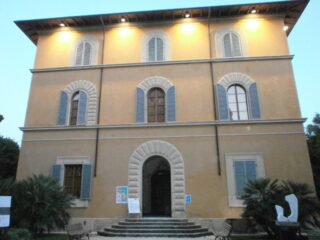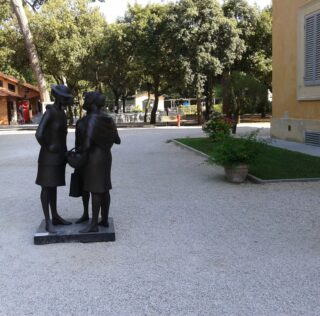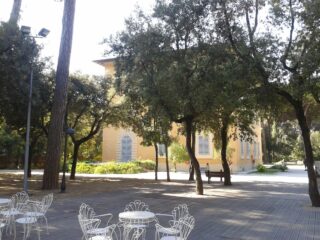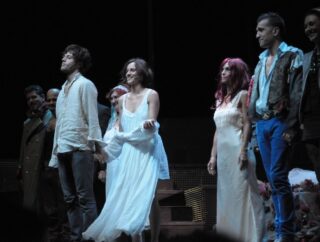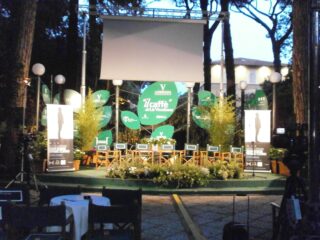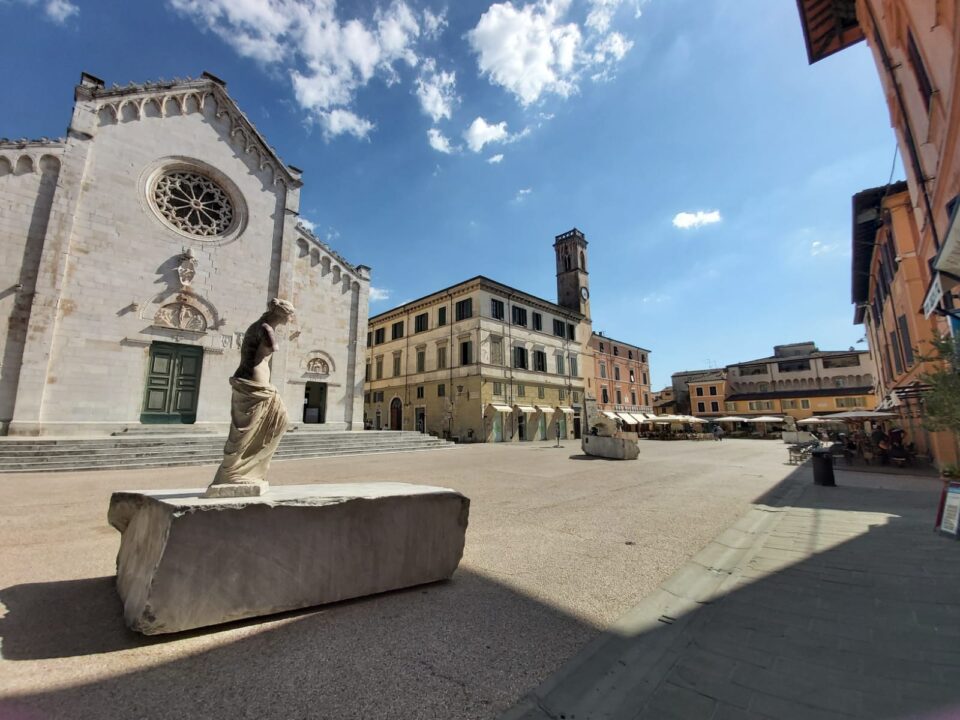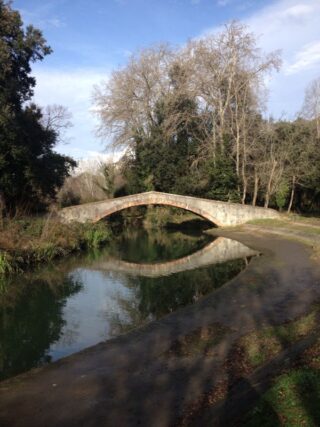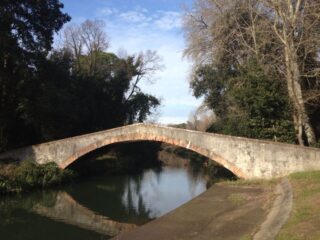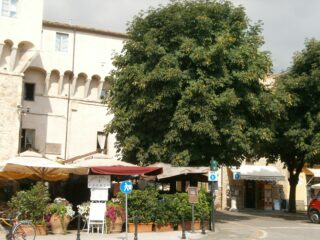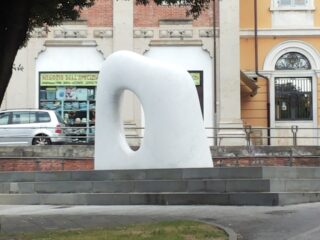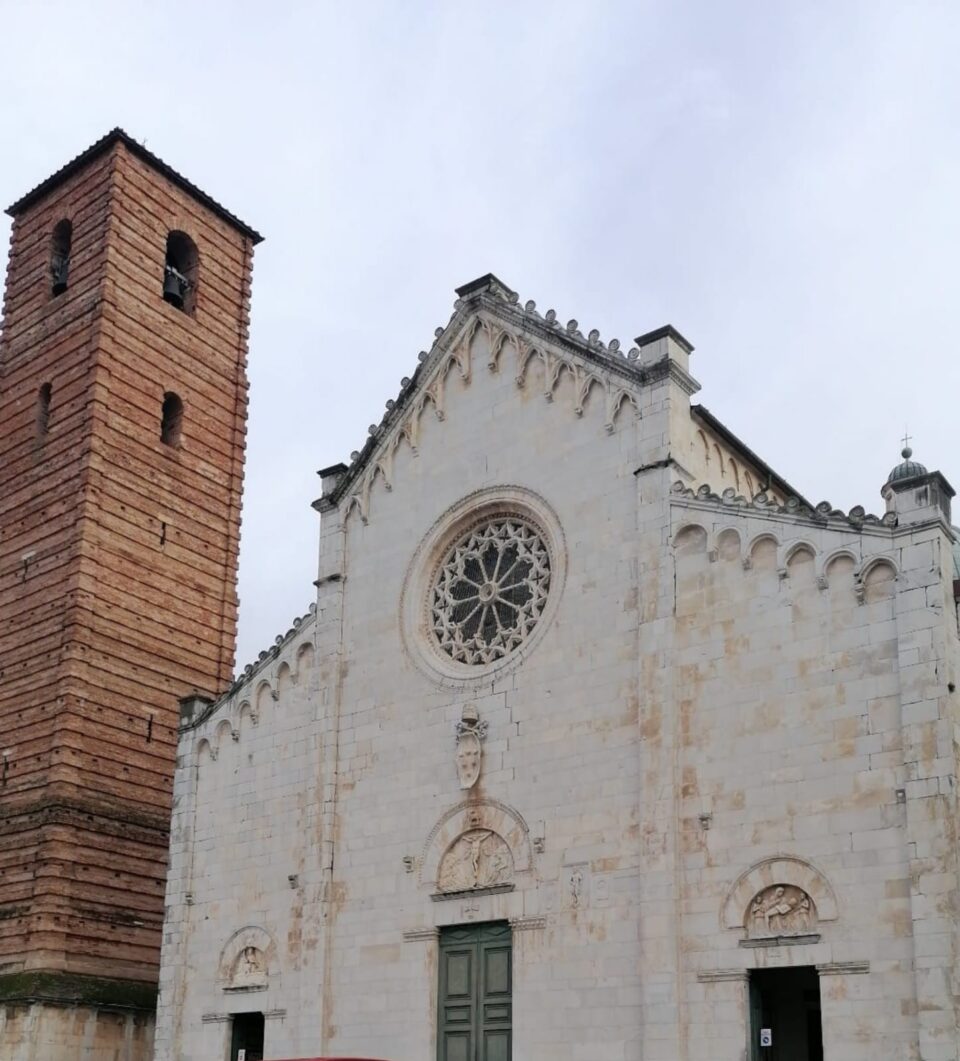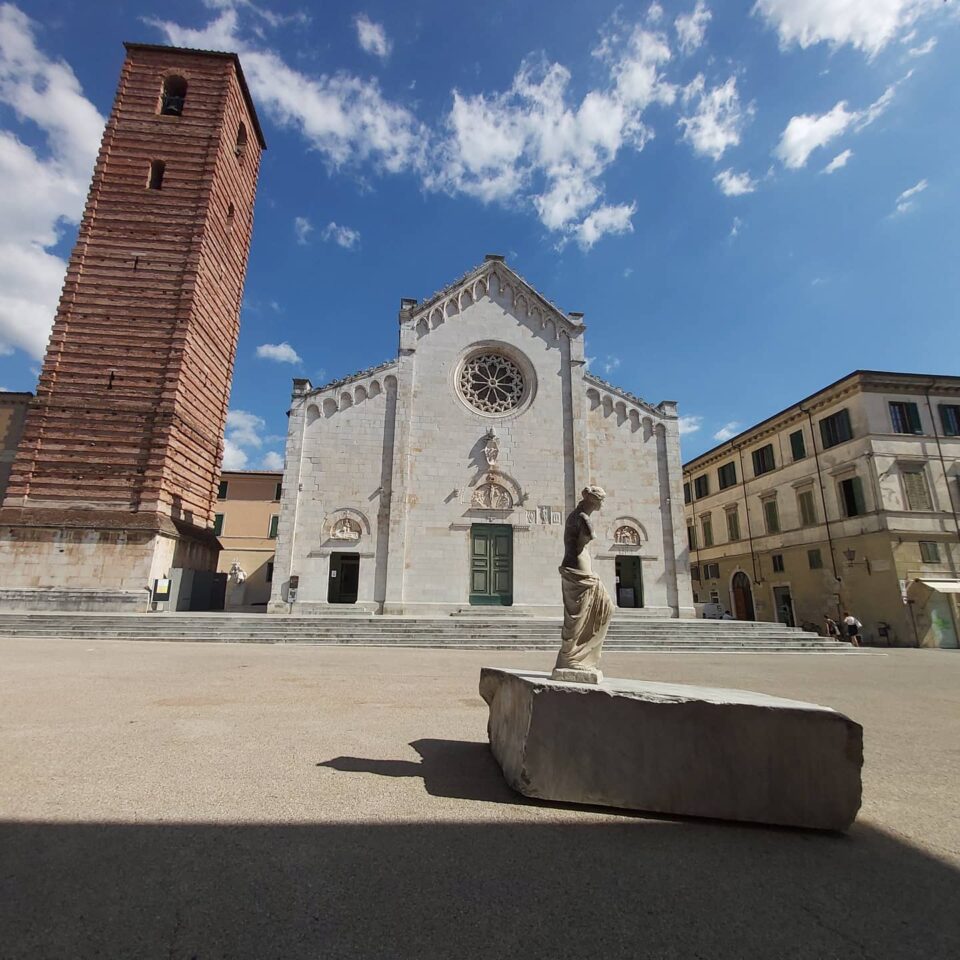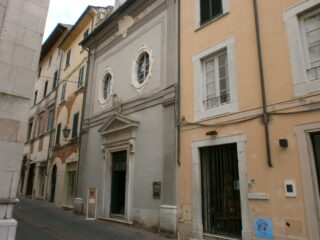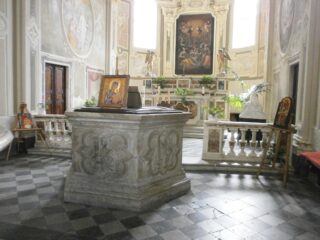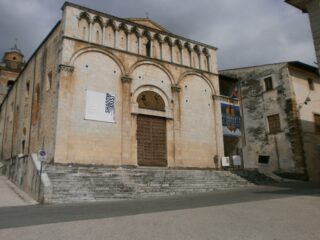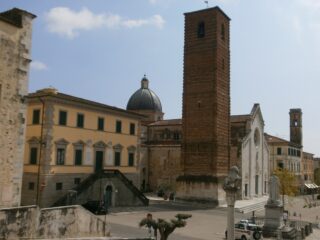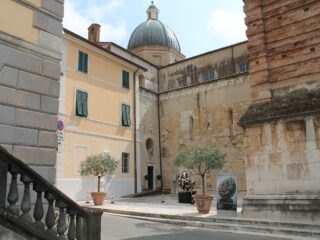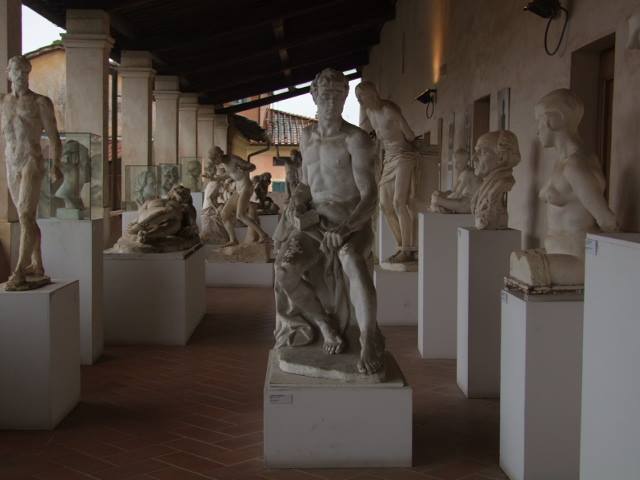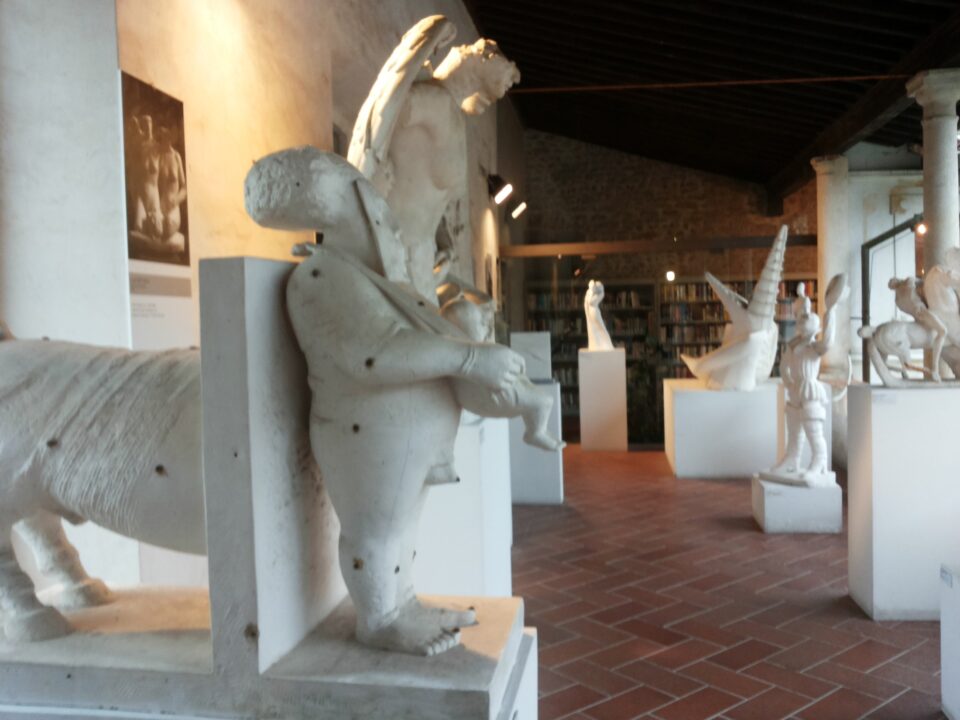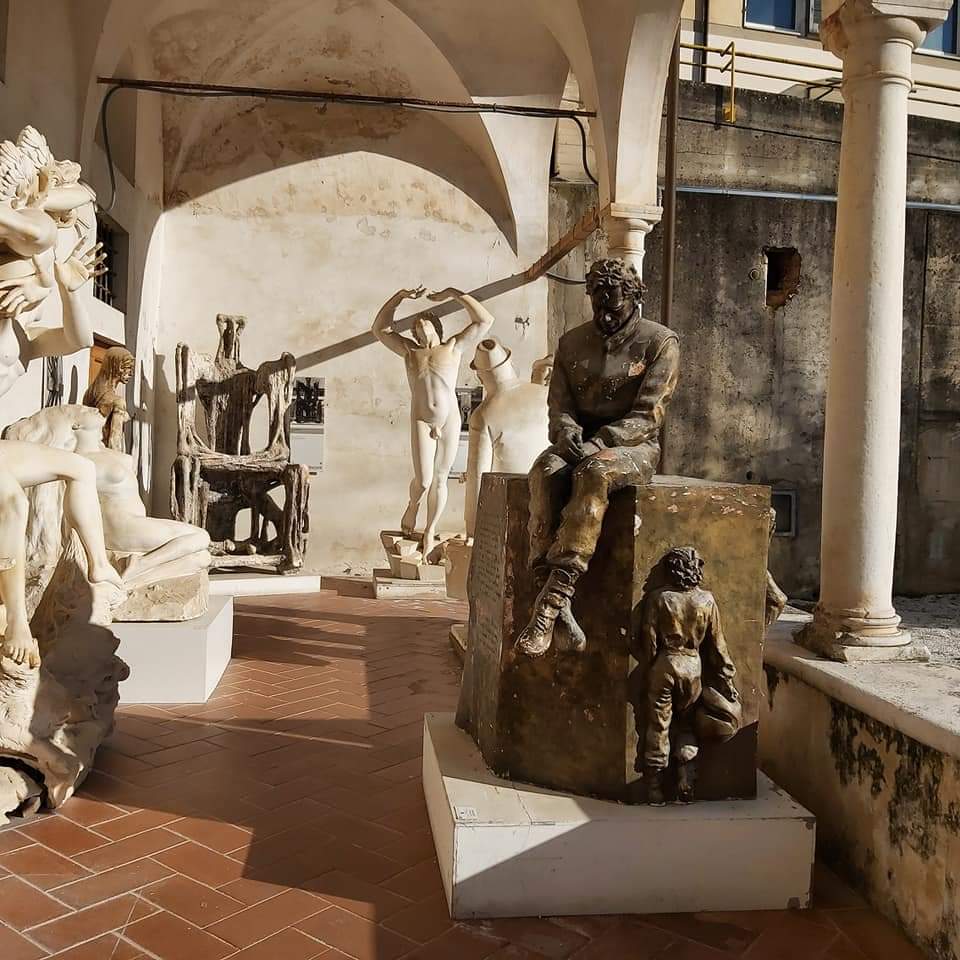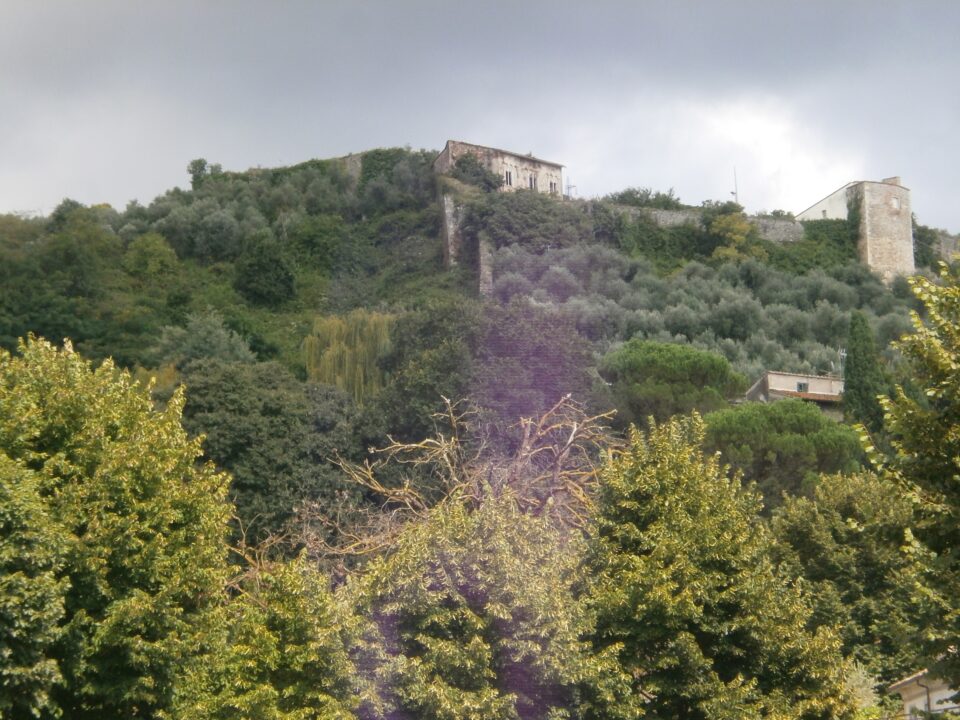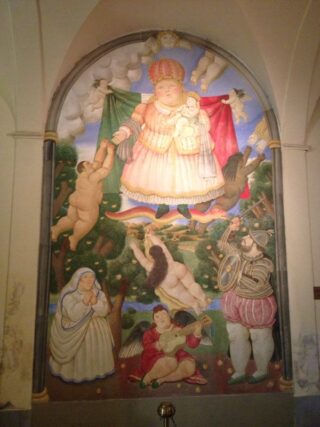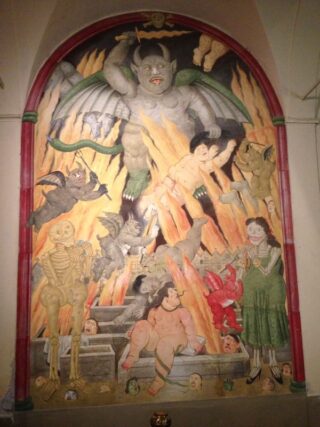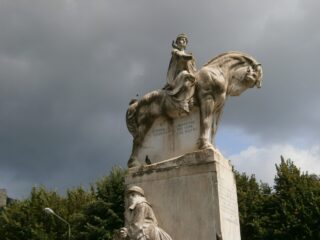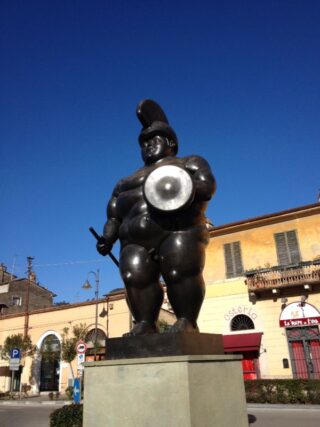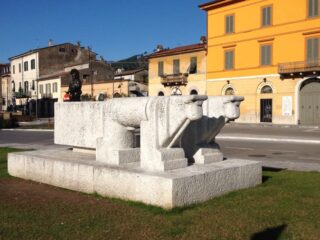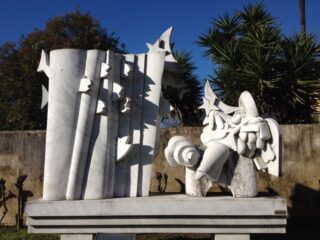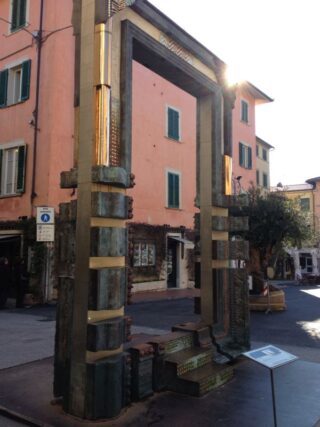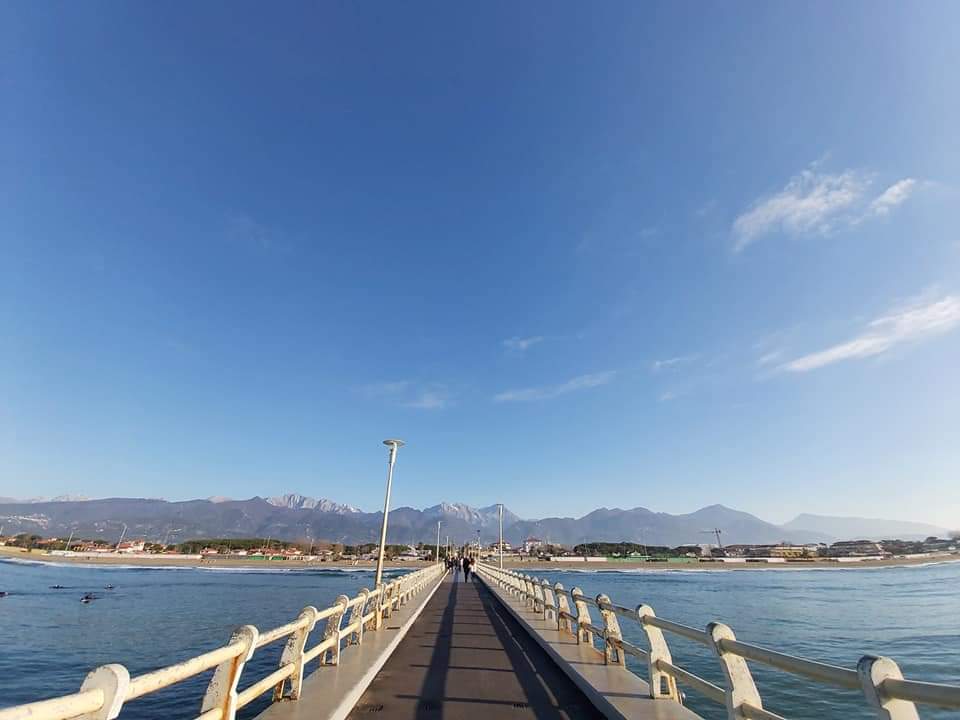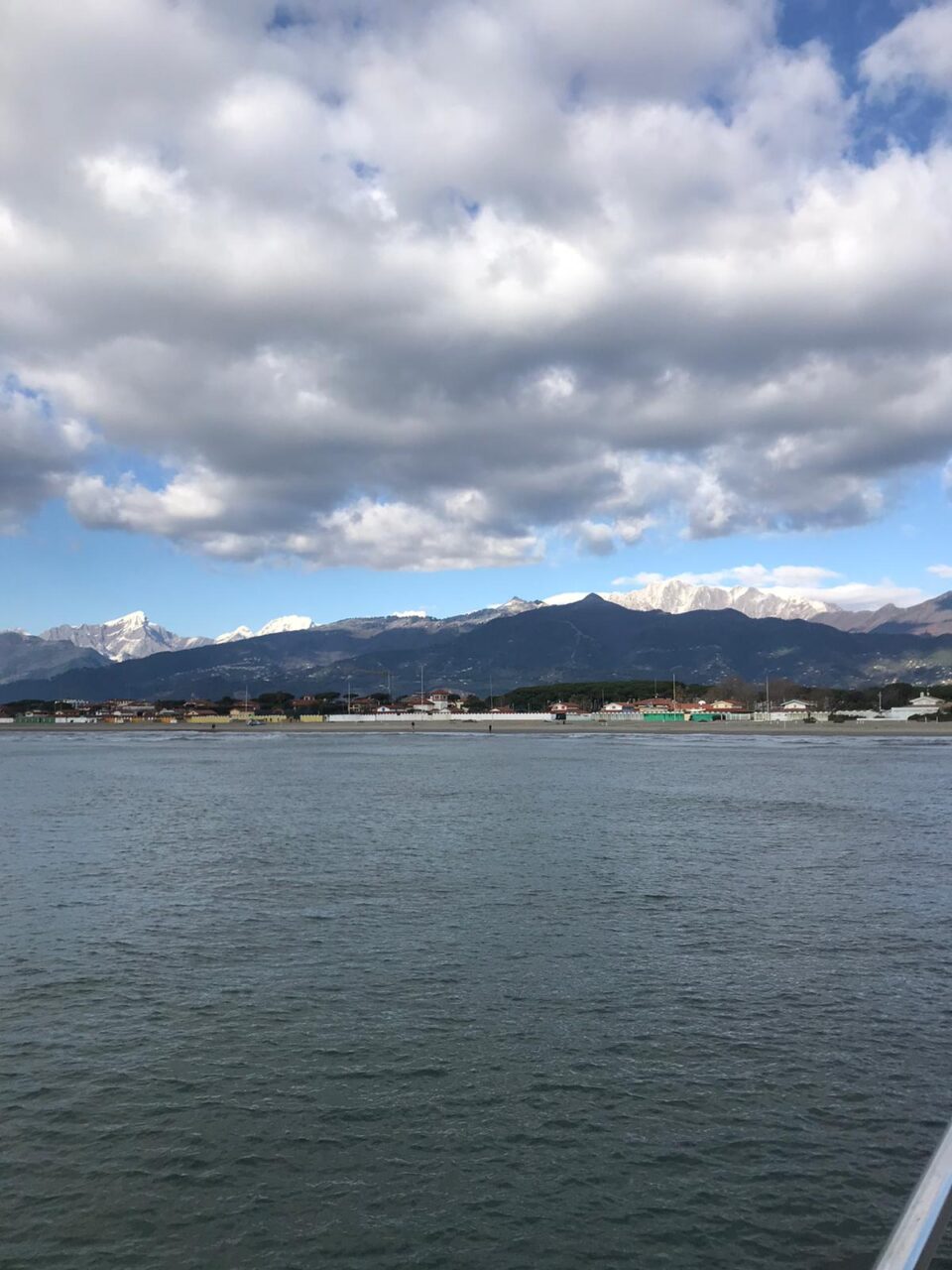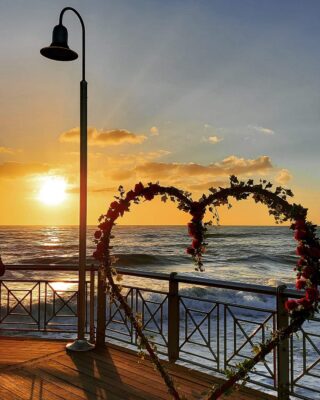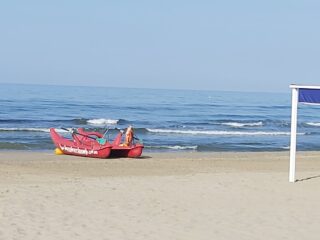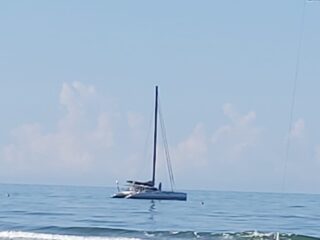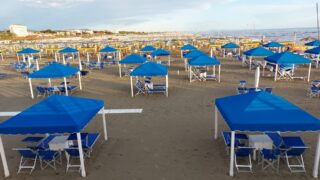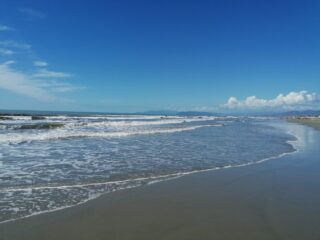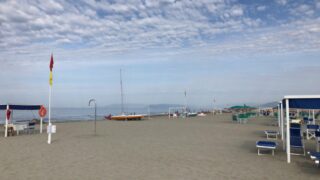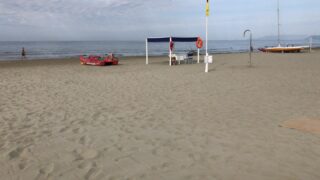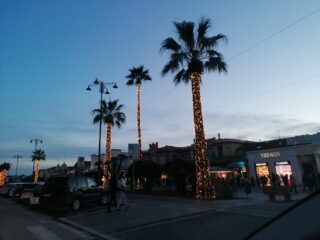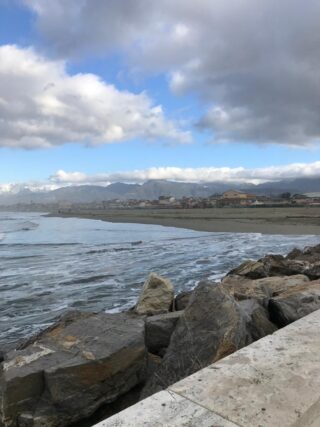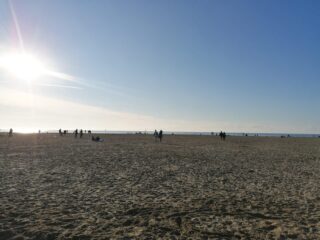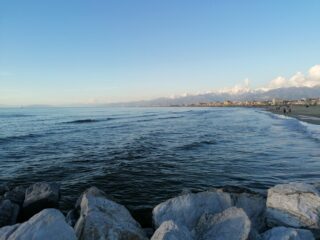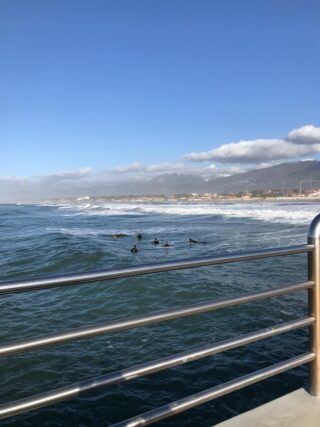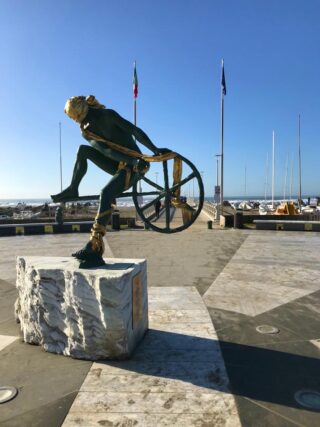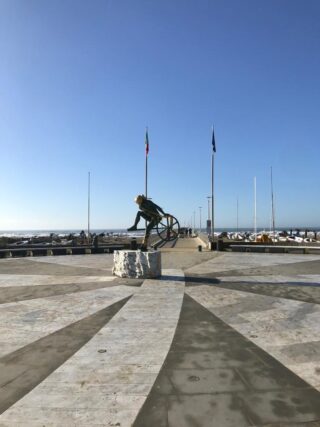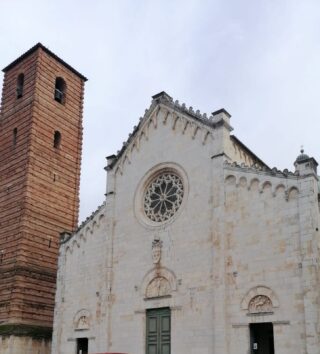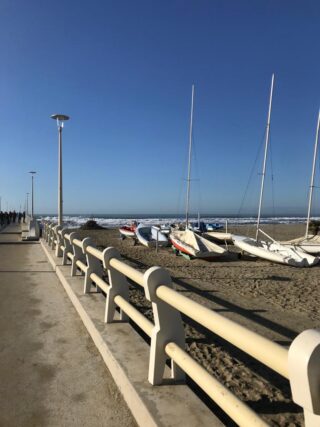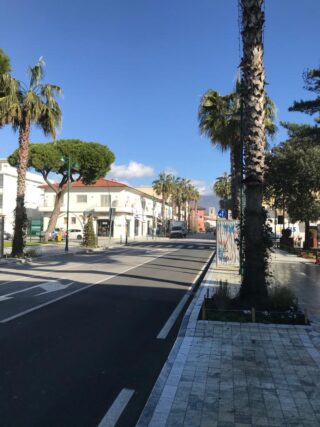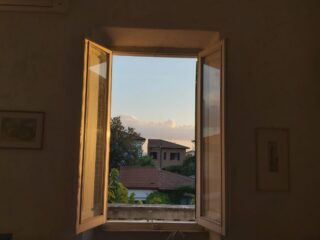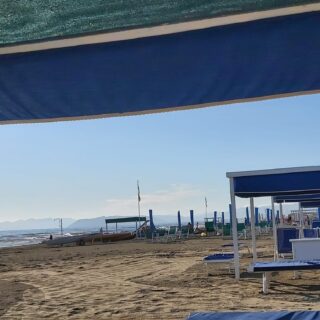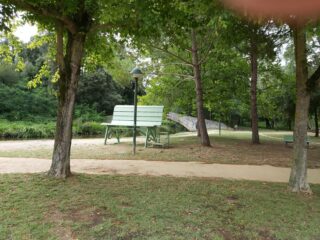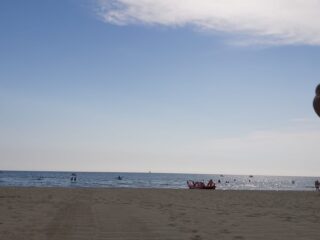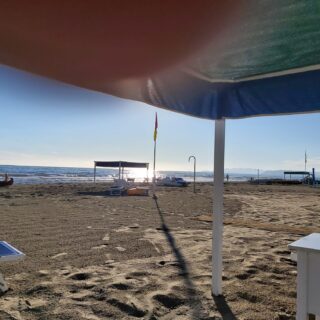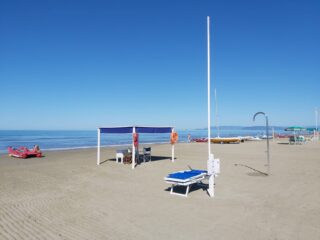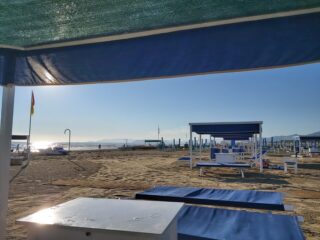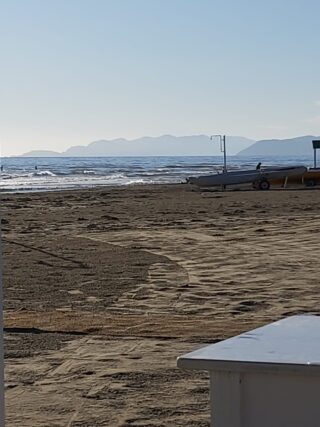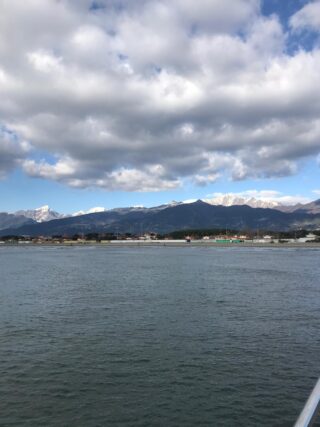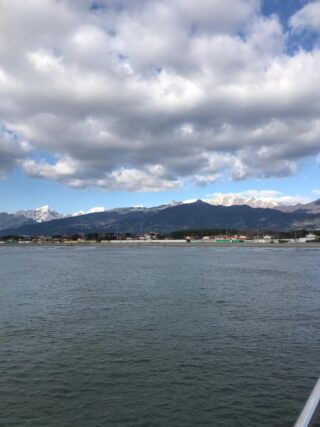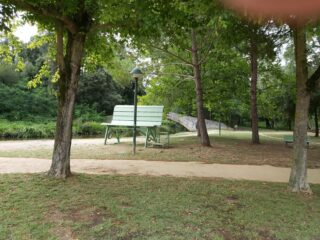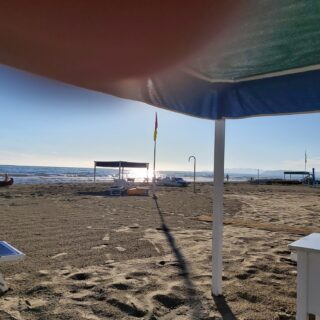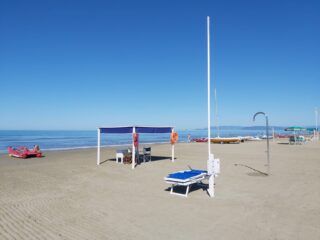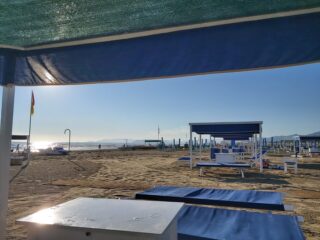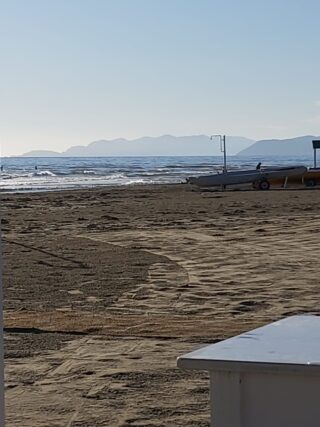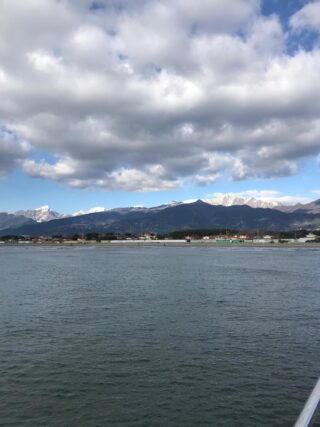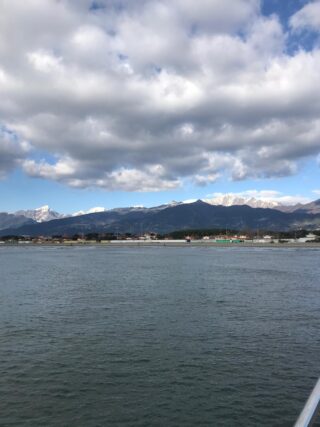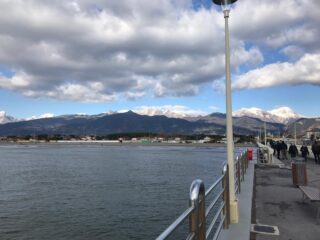Versilia is a well-known area of natural and international appeal and a popular holiday destination located on the northern coast of Tuscany, between the Tyrrhenian Sea and the Apuane Alps .The area comprises famous seaside resorts, such as Torre del Lago, Viareggio,Marina di Pietrasanta, Pietrasanta and Forte dei Marmi.
Our coach tour starts in Torre del Lago, a small town located between Viareggio and Lucca. It became famous in the early 1900s due to the presence of the composer, Giacomo Puccini (1858-1924), who was born in Lucca and lived in a lovely villa on the shores of Lake Massaciuccoli. Giacomo Puccini, who is buried in the Chapel of his villa, composed his most famous works, such as “Manon Lescaut “(1891), “La Bohème” (1896), “Tosca” (1900) “Madama Butterfly” (1904),” La Fanciulla del West” (1910),” La Rondine” (1917) and “Il Trittico” (1918) in Torre del Lago.
The house, now known as Puccini Museum, is furnished in Art Nouveau style and contains musical and hunting mementos of the famous composer. Nowadays the house belongs to Simonetta Puccini, Giacomo Puccini’s only descendant.The statue in the small square overlooking the wonderful lake is dedicated to the composer.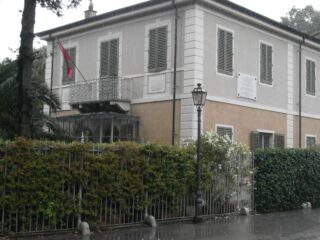
Near the lake there is an open-air theatre where a festival, known as Puccini Festival, is held every summer. The festival hosts some of the most famous opera companies in the world, creating an unforgettable experience in the Tuscan countryside.
Leaving Torre del Lago , we head for Viareggio, a very popular seaside resort in Versilia. The city, situated between the Tyrrhenian Sea and the Apuane Alps, is famous for its fishing port and long, sandy beaches.

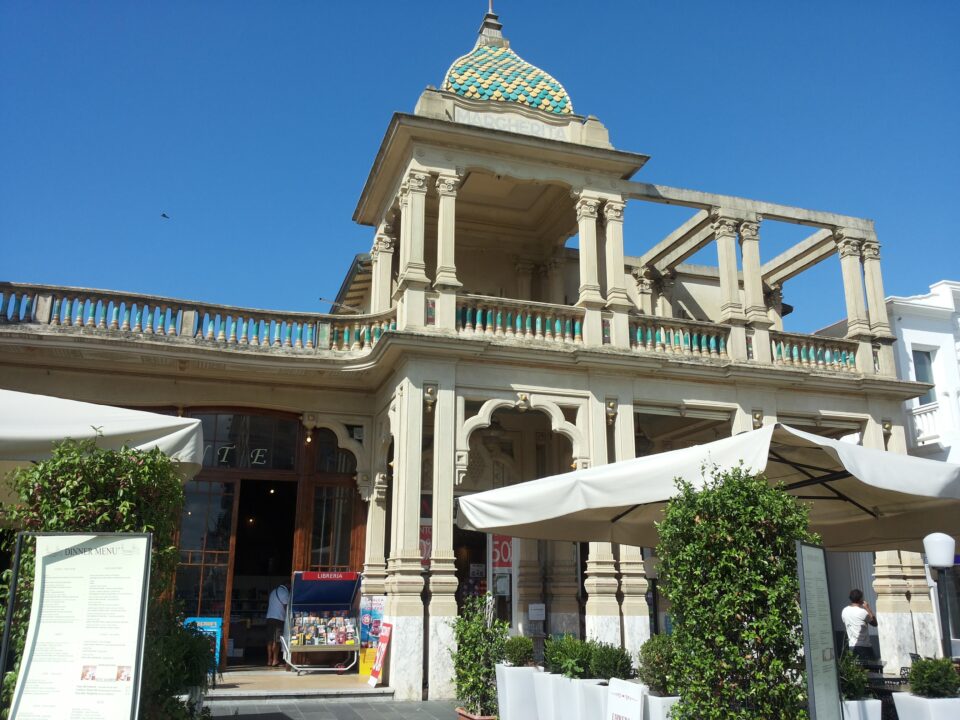
Viareggio became famous in the 18th century when rich and noble families chose this seaside resort for their summer holidays. In the 19th century Paolina Bonaparte, Napoleon’s sister, and Maria Luisa di Borbone bought their summer residences here.The first bathing establishments, Bagno Nereo and Bagno Dori ,were opened in 1828;while Bagno Balena and Bagno Nettuno were opened at the end of the 19th century.In Viareggio there is a charming promenade, Viale Regina Margherita, lined with exclusive and elegant shops, cafés,restaurants, bathing establishments ,which date back to the first half of the 20th century, and Art Nouveau buildings, such as Grand Hotel Principe di Piemonte, Gran Caffe’ Margherita, Teatro Margherita , Palazzo delle Muse and Bagno Balena.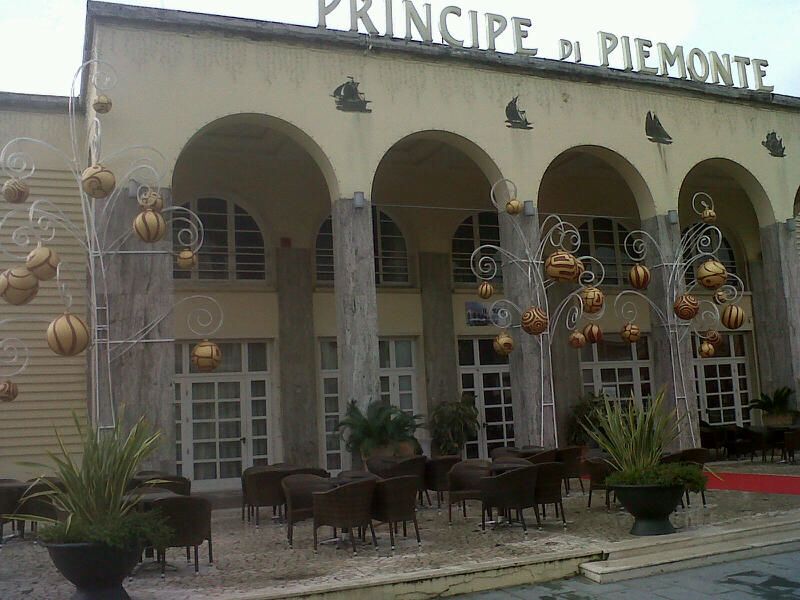
Palazzo delle Muse dates back to the 19th century and is located in Piazza Mazzini. It houses the Civic Archeological Museum and the GAMC, Gallery of Modern and Contemporary Art, which is an exhibition area of 1,500 square metres , inaugurated by Lorenzo Viani in 2008,containing modern and contemporary paintings and sculptures by famous artists such as Moses Levy and Umberto Bonetti.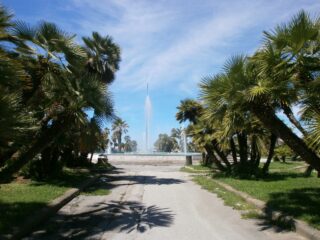
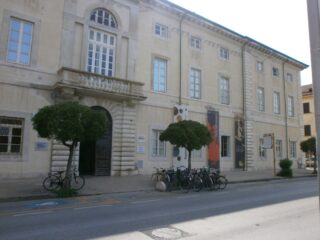
Walking down the promenade you reach the port featuring many shipyards where boats and ships are built and then exported all over the world. It was inaugurated by King Vittorio Emanuele III in 1913.
From here it is easy to reach Matilde Tower, an example of architecture, built for the defence of the port in 1541. Its name comes from Matilde of Canossa because it was believed the countess ,who lived in Viareggio in the 12th century, had built it.
Viareggio is famous for its Pineta di Ponente and Pineta di Levante dating back to the 18th century; here you can find recreational areas, bike paths, sports facilities, as well as footpaths and lanes. In summer you can hire bikes and go cycling through the lovely paths of the pinewood.
Viareggio is also famous for its Carnival, which takes place in February every year. Huge floats parade along the promenade. The Carnival celebrations with masked pageants, fireworks, parades and music are very famous in Italy and attract many tourists.
The allegorical floats, which are made in “papier-mâché” and parade along Viareggio promenade ,are inspired by Italian and international politics and other current events .Viareggio Carnival dates back to 1873, when a group of young men sitting around the tables of “Caffè del Casinò” had the idea of organizing a parade. They asked the best artisans and sculptors to build astonishing carriages and soon it was a popular event, a moment of joy in the city during the glorious days of the “Belle Époque” in Europe. Then World War I broke out and there was an interruption of the event until 1921 when Viareggio parade returned even more beautiful than before.In 2001 the new Cittadella del Carnevale was inaugurated; it is a great structure where floats are created. Since 2002 Viareggio Carnival has been named Italian and European Carnival.The symbol of Carnival is Burlamacco. Its name comes from the Burlamacca Canal that flows through Viareggio.
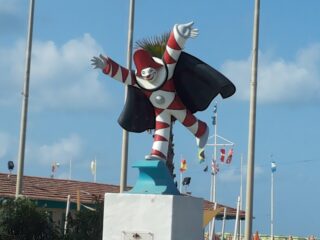
We next head off to Marina di Pietrasanta, which is a lovely area divided into four charming seaside resorts: Focette, Motrone, Tonfano and Fiumetto, each with its own picturesque centre. This area attracts lots of tourists in summer thanks to its long, sandy beaches, bathing establishments, elegant tree-lined avenues, lovely promenades ,shady pine woods, sports facilities, luxury hotels, wonderful villas, restaurants , cafés, pubs and
discos.
In Marina di Pietrasanta you can visit La Versiliana, a famous public park , surrounded by a huge pinewood, where Gabriele D’Annunzio‘s villa is located. La Versiliana Festival is held here every summer. It offers tourists a large variety of plays, ballets and concerts in its open–air theatre. La Versiliana is also famous for the meetings at Il Caffe’della Versiliana , where famous artists and politicians express their opinions about literature , culture ,art, society and politics.
From here it is easy to reach Pietrasanta ,the most important historical city in Versilia, located between Viareggio and Forte dei Marmi and nestled between the Apuane Alps and the Tyrrhenian Sea.
Pietrasanta developed near the famous Via Francigena on a castrum plan and it was founded by Guiscardo Pietrasanta, Podesta’ of Lucca, in 1255.
It is often called “the City of the Artists “ or “Small Athens” for its excellent cultural and artistic heritage, marble works of art, marble and bronze foundries and workshops.Many artists live or visit this city every year; even Michelangelo visited it and appreciated its marble and the local artisans’ works of art.
The city is famous for its International Park of Contemporay Sculpture, which offers an open-air exhibition of contemporary and modern works of art set in the public spaces of the historical centre .
People who wish to cycle to Pietrasanta can get there thanks to the lovely Viale Apua, which is flanked by the pinewood and links Marina di Pietrasanta, and in particular Fiumetto, to this city .You can reach it also by car or by coach.
Our walking tour starts in Piazza Carducci,where Porta a Pisa – Rocchetta Arrighina is located.
Porta a Pisa is the most picturesque access to the historical centre. This gate was built in the 15th century and remodelled during the Renaissance. It preserves a 16th- century chalk sketch, “Annunciation” by Astolfo Petrazzi.
In this square you can see Propulsione (2003), a bronze sculpture by Franco Miozzo, and Arlecchino (2011), a bronze sculpture by Joseph Sheppard.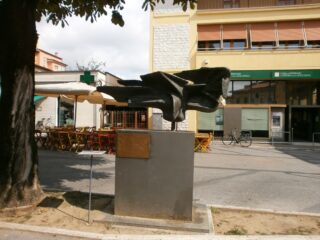
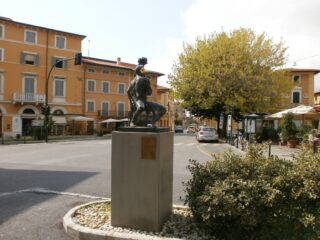
From here you can also see Myomu-Chiave del Sogno (2004),a white marble sculpture by Kan Yasuda, located in Piazza Stazione.
Near the gate there is Piazza Giordano Bruno, where you can admire Giordano Bruno ‘s marble bust by Antonio Bozzano and Il Cavalletto (2006), a bronze sculpture by Romano Cosci.
We next head off to Piazza del Duomo, where you can admire St. Martin’s Cathedral with its Bell Tower.
The Cathedral dominates the centre of this rectangular square. It was built in the 14th century on the site of the ancient Church of St. Martin. Its marble faҫade with three portals is adorned with a beautiful rose window, some bas-reliefs and coats of arms of the city’s rulers.
Inside there is a nave with two aisles divided by columns. You can admire 19th-century frescoes by Luigi Ademollo , the marble holy water stoup by the sculptor Stagio Stagi, the 16th-century pulpit by Lorenzo Stagi and two wonderful paintings “La Madonna del Rosario” by Matteo Rosselli and “La Nativita’ ” by Piero Dandini. You can also visit “the Chapel of the Virgin”, where you can admire a late Gothic painting , “La Madonna del Sole” – “the Virgin with Child and Saints John the Baptist and John the Apostole” by an unknown 15th- century painter.
Next to the Cathedral there is the Bell Tower ,a 15th-16th -century building by Donato Benti. It is about 36 metres tall and contains a helicoidal staircase.
The Baptistery ,which is located near the Cathedral, dates back to the 17th century and contains two magnificent baptismal fonts by the sculptors Donato Benti , Nicolao di Matteo Civitali, Filippo Pelliccia and Orazio Bergamini .
In Piazza del Duomo you can also admire the Clock Tower , which was built in the 16th century and restored in 1860. It is in the German Gothic style.
From here it is easy to reach Palazzo Moroni and “Bruno Antonucci” Versilia Archeological Museum. The Palace dates back to the 17th century and it was Pietrasanta City Hall till the 1940s.
This building contains many Etruscan, Roman and Medieval objects and documents and a collection of Renaissance ceramics.
After the visit to this building we head off to the Church and the Convent of St . Augustine. The Church , which was built by the Augustinian monks in the 14th century ,has a marble faҫade with three round arches and a Gothic loggia. It is in the Romanesque style and it houses beautiful 14th-century and 15th-century frescoes. Inside you can see the tomb inscriptions of noble families from Pietrasanta on the floor and Padre Eugenio Barsanti ’s cenotaph . The church has a single nave and a fine trussed timber roof.
The Convent was completed in the 15th century . You can see lunettes with episodes from the life of St. Augustine by Astolfo Petrazzi from Siena in its lovely loggia.
The complex now houses “Luigi Russo” Cultural Centre, ”Giosue’ Carducci” Civic Library and “ “Pierluigi Gherardi” Museo dei Bozzetti (The Museum of Sketches)” containing models and sketches by Henri Georges Adam, André Bloc, Fernando Botero, Antonio Bozzano, , César, Pietro Consagra, Niki De Saint Phalle, Jean Robert Ipousteguy, Igor Mitoraj, Costantino Nivola, Isamu Nogui, Alicia Penalba, Beverly Pepper, Gio’ Pomodoro, Edoardo Rubino, Ivan Theimer, Leone Tommasi, Kan Yasuda and many others.
In Piazza del Duomo you can also see other buildings such as Palazzo Pretorio housing The Civic Theatre and Palazzo Panichi Carli, where Padre Eugenio Barsanti Museum is located.
You can also admire the Liberty Column or Marzocco, a 16th- century column by Donato Benti with its Marzocco Lion, heraldic symbol of the Florentine dominion and the 19th-century Monument to Leopoldo II, Grand Duke of Tuscany, by Vincenzo Santini. Near the column you can see a fountain created in the 17th century by the sculptor Giovanni Battista Stagi.
In Piazza del Duomo you can also see plaques, which witness Michelangelo’s visits to Pietrasanta and the contract signed by the artist for the marble he needed for the faҫade of the Church of San Lorenzo in Florence. You can also admire Royal Ancestors ,a sculpture by Dashi Namdakov, placed here in December 2013.
From this square, you can see the ancient Rocca di Sala and Palazzo Guinigi, which are located on top of a hill behind the city centre .The Rocca was a Lombard fortress ,which was later connected to the city walls. Palazzo Gunigi was built by Paolo Guinigi in the 14th century. From here you can get a splendid view of Pietrasanta.
You can also pay a visit to the Church of St. Anthony and St. Blaise (The Church of the Divine Mercy) in Via Mazzini. This is the oldest church in Pietrasanta. Inside the church you can admire the statue of St. Anthony ,the statue of St. Blaise, attributed to Jacopo della Quercia, and the 1993 frescoes “La Porta del Paradiso “ and” La Porta dell’Inferno” by Fernando Botero .
Walking down Via del Marzocco or Via Mazzini, two lovely streets lined with ancient buildings, art galleries, wineries, cafès, restaurants and exclusive shops, we reach Piazza dello Statuto, used as a football field in the 1800s, and Piazza Matteotti, where the Town Hall is located.
In Piazza dell Statuto there are three bronze sculptures: San Giovanni by Rosario Murabito ,Il Cavallino,by Ferruccio Vezzoni and Danzatore by Anna Cromy and a Carrara white marble sculpture :Il Cerchio del Vento by Junkyu Muto.
In Piazza Matteotti you can admire two white marble sculptures : Memoria di Pietrasanta by Pietro Cascella and San Martino by Franco Miozzo, and two bronze sculptures : Il Guerriero by Fernando Botero and L’Eredita’ by Stanley Bleifeld.
Before you leave the city you can also visit the Church of San Nicola di Sala ,located near the cathedral, and the 16th- century Church and Convent of St. Francis. Inside you can admire paintings and frescoes by Luigi Ademollo.
The Convent houses The Visual Arts Centre Foundation of Pietrasanta. In front of the Church there is San Francesco, a bronze sculpture by Harry Marinsky.
While wandering through the cobbled streets of this Medieval city you can admire a lot of marble sculptures such as Il Viandante and Riflessione by Michele Benedetto, Senza Titolo by Tadensz Koper, L’Oiseau by Jean Michel Folon, Serenata by Rinaldo Bigi, Il Pugilatore by Francesco Messina and bronze sculptures such as La Campagna va al Mercato by Marcello Tommasi , Il Centauro by Igor Mitoraj ,Monumento al Soldato and Alleato by Marcello Tommasi.
We next visit the MuSA, Museo Virtuale della Scultura e Architettura di Pietrasanta (Virtual Museum of Sculpture and Architecture in Pietrasanta) ,which offers visitors spectacular and interactive presentations of the artistic, cultural, craft and industrial panorama of the local area.
Leaving Pietrasanta we head for Forte dei Marmi, which was built by Archduke Leopold I in 1788 and is one of the most elegant seaside resorts in Versilia. It is famous for its wonderful pier , lovely bathing establishments, exclusive shops, luxury villas, expensive hotels, charming restaurants, discos and pubs. Today the area is a popular destination for businessmen, managers, politicians, show-men, movie and sports stars such as Zucchero, Bocelli, Panatta, Totti, Armani and many others.
